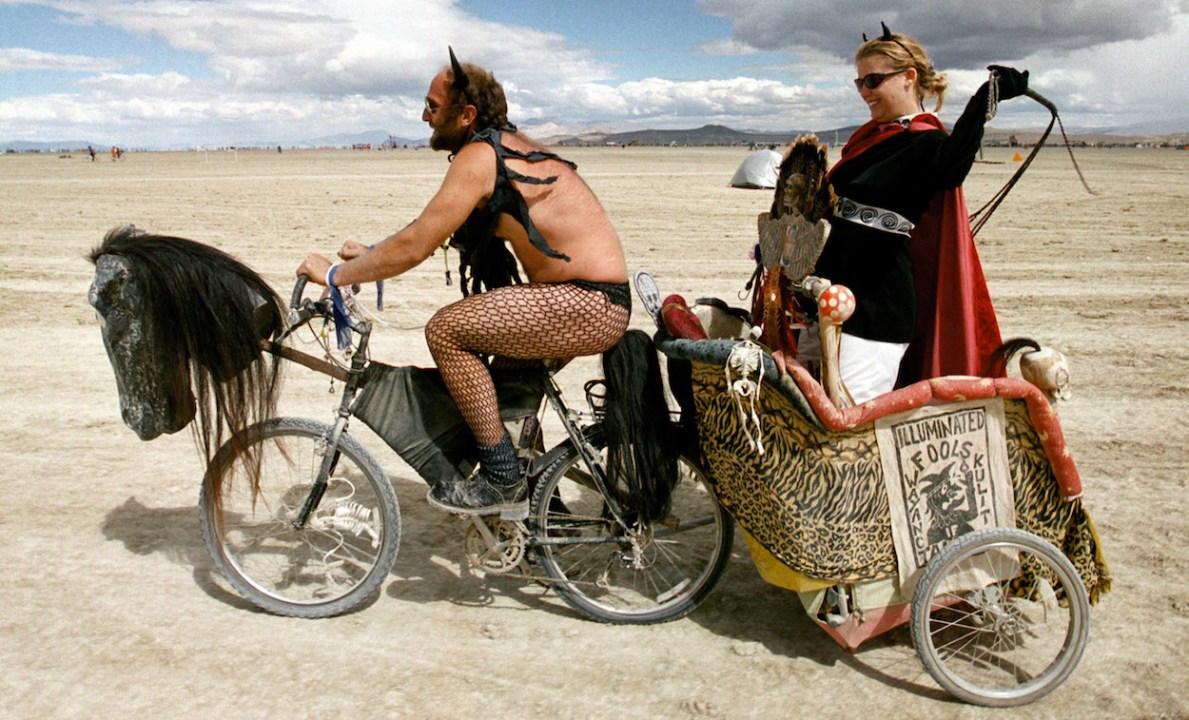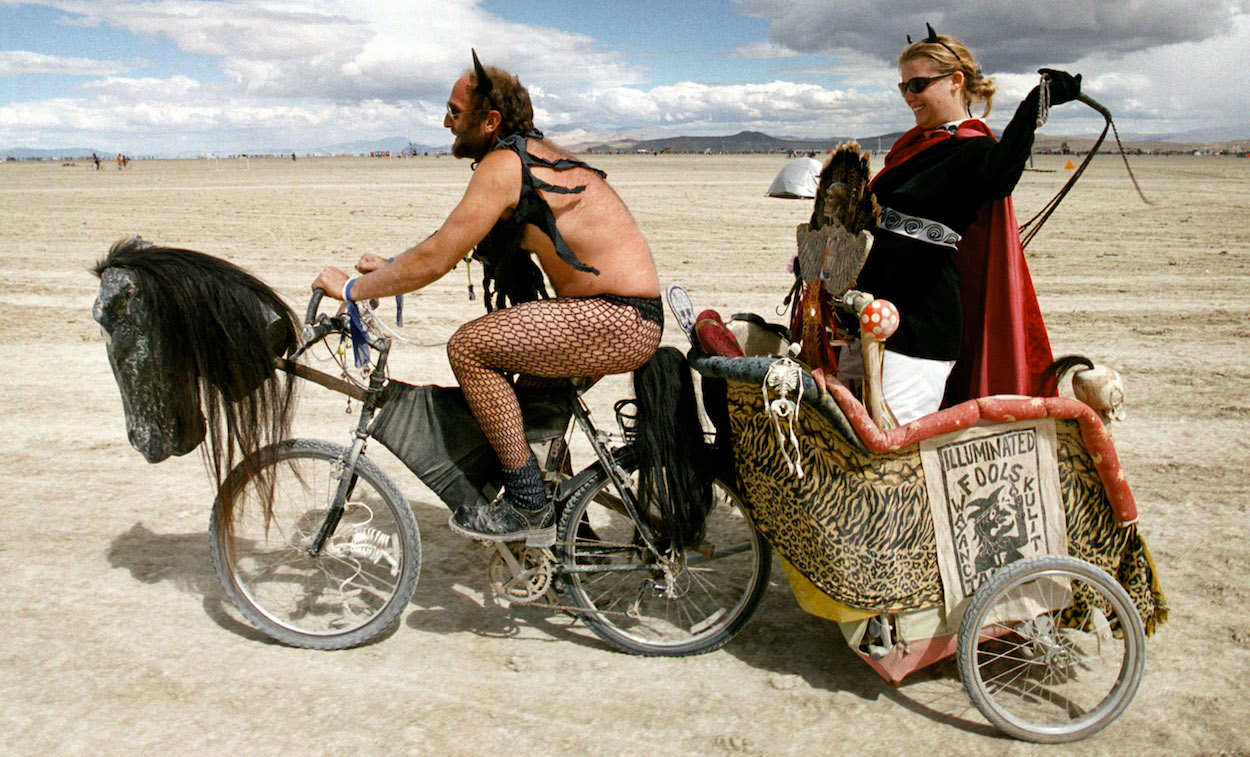In the summer of 1986, two men, Larry Harvey and Jerry James, built an eight-foot-tall wooden effigy of a man and set fire to it on a beach in San Francisco. The event – an impromptu bonfire attended by several dozen of their closest friends – spawned what has since become a cultural phenomenon: an event seen by some as the ultimate rejection of capitalism, and by others as a giant drug-fuelled knees-up in the desert.
I’ve noticed the changes in the six years that I have been going to Burning Man
Thirty-seven years on, Burning Man still culminates in the razing of a wooden sculpture, but since then both ‘the man’, and the event itself, have grown exponentially. This year the structure measured nearly 80ft in height, and more than 70,000 people gathered to watch as it was set ablaze. And among them, rubbing shoulders with the traditional cast of ravers, hippies, and hedonists, is a growing celebrity clientele, made up of internet influencers, corporate titans, and Silicon Valley billionaires.

Britain’s best politics newsletters
You get two free articles each week when you sign up to The Spectator’s emails.
Already a subscriber? Log in







Comments
Join the debate for just £1 a month
Be part of the conversation with other Spectator readers by getting your first three months for £3.
UNLOCK ACCESS Just £1 a monthAlready a subscriber? Log in